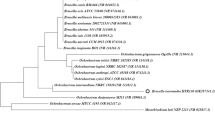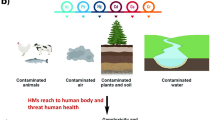Abstract.
2,4,6-Trinitrotoluene (TNT), a toxic nitroaromatic explosive, accumulates in the environment, making necessary the remediation of contaminated areas and unused materials. Although bioremediation has been utilized to detoxify TNT, the metabolic processes involved in the metabolism of TNT have proven to be complex. The three aerobic bacterial strains reported here (Pseudomonas aeruginosa, Bacillus sp., and Staphylococcus sp.) differ in their ability to biotransform TNT and in their growth characteristics in the presence of TNT. In addition, enzymatic activities have been identified that differ in the reduction of nitro groups, cofactor preferences, and the ability to eliminate-NO2 from the ring. The Bacillus sp. has the most diverse bioremediation potential owing to its growth in the presence of TNT, high level of reductive ability, and capability of removing-NO2 from the nitroaromatic ring.
Similar content being viewed by others
Author information
Authors and Affiliations
Additional information
Received: 16 May 1997 / Accepted: 19 July 1997
Rights and permissions
About this article
Cite this article
Kalafut, T., Wales, M., Rastogi, V. et al. Biotransformation Patterns of 2,4,6-Trinitrotoluene by Aerobic Bacteria. Curr Microbiol 36, 45–54 (1998). https://doi.org/10.1007/s002849900278
Issue Date:
DOI: https://doi.org/10.1007/s002849900278




